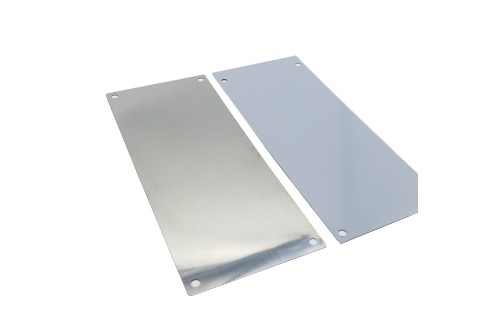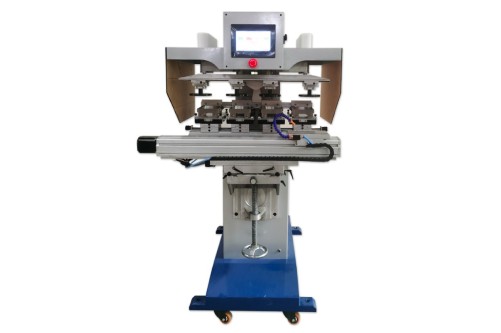Introduction
Due to its ability to print on a wide range of substrates and irregularly shaped objects, pad printing technology has been an industry standard for many years. Users are now confronted with the decision between conventional and digital pad printing technologies due to developments in digital printing. For the purpose of assisting prospective purchasers of pad printing apparatus in making well-informed decisions, this article will examine the primary distinctions between these two processes.

Conventional Technology for Pad Printing
Over the course of several decades, traditional pad printing, also known as pad printing, has remained a steadfast approach. Through this procedure, a silicone pad is utilized to transfer an image from an inscribed plate to the intended surface. Printing plates, ink cups, doctor blades, silicone pads, and ink cups are some of the standard components associated with pad printing machines.
The capability to produce high-quality prints with accurate registration is one of the principal benefits of conventional pad printing technology. Furthermore, printing on a vast array of substrates—including glass, metals, plastics, and plastics—is possible with this method is its exceptional versatility. Moreover, in comparison to alternative printing techniques, conventional pad printing apparatus is practically economical, rendering it appropriate for production runs of modest to moderate magnitude.
Standard pad printing, nevertheless, does possess certain constraints. Particularly when transitioning between distinct designs or hues, the setup and changeover periods may be substantial. Furthermore, this approach may present difficulties in attaining intricate details or gradients, thereby restricting the flexibility of the design.
Printing Technology for Digital Pads
Digital pad printing represents the most recent advancement in the industry, as opposed to conventional pad printing. By eradicating the need for intermediate processes such as etched plates and silicone pads, digital pad printers employ inkjet technology to apply ink directly to the printing substrate.
Achieving photorealistic prints replete with intricate details and vivid hues is the primary benefit of digital pad printing. By utilizing this approach, designs can be modified rapidly and easily without the requirement of supplementary equipment, providing an exceptional level of adaptability. In contrast to conventional printing methods, digital pad printing machines deliver on-demand printing and brief production runs with expedited setup times and decreased waste.
In addition, color management is a strong suitability of digital pad printing, as it permits meticulous regulation of color tones and gradients. Applications requiring precise color reproduction, such as product labeling and branding, can benefit significantly from this capability.
Although digital pad printing technology offers few disadvantages in comparison to conventional methods, it may require a greater initial investment. To ensure optimal adhesion and print quality, particular substrates might also necessitate pre-treatment or specialized inks. Nevertheless, in order to meet the demands of contemporary markets and expedite their printing procedures, digital pad printing emerges as a compelling option due to its adaptability and efficacy.
Distinction-Specific Characteristics of Digital Pad Design
Dimensions and Print Quality
Prints of superior quality, characterized by intricate intricacies and accurate registration, are characteristic of conventional pad printing methods. In terms of print resolution and photorealistic image reproduction, digital pad printing outperforms conventional processes. By producing reproductions that closely resemble the original artwork, digital printers are capable of producing more refined details and seamlesser gradients.
Practical Considerations for Choosing Between Traditional and Digital Pad Printing
Production Volume
In determining which pad printing technology is most appropriate for a given business, the volume of production is a crucial factor. When efficiency and consistency are of the utmost importance, conventional pad printing is ideal for medium to large-scale production issues. On the other hand, digital pad printing demonstrates exceptional performance in situations involving little-batch production and printing on demand, providing economical solutions and expeditious turnover times for such projects.
Complicated Design
When making a decision between digital pad printing and traditional printing, it is also vital to take into account the intricacy of your printing designs. Intricate details and complex color gradients may be difficult for traditional pad printing to faithfully reproduce, which would restrict its applicability to artwork that is exceptionally detailed. Digital pad printing, on the other hand, provides unparalleled design versatility by permitting exact manipulation of color, texture, and resolution; thus, it is well-suited for intricate and multicolored designs.
Requirements Domain-Specific
The technology selected for pad printing may be impacted by industry-specific regulations and requirements. Traditional pad printing is frequently employed in the automotive and electronics sectors to produce prints that are resistant to solvents and long-lasting. Conversely, digital pad printing may be deemed more appropriate by the healthcare and pharmaceutical sectors due to their emphasis on serialization and variable data printing functionalities.
Financial Limitations
When comparing the cost-effectiveness of traditional pad printing technologies to digital capabilities, financial constraints must be taken into account. Long-term profitability may be impacted by recurring costs, including plate production, labor, and maintenance, despite the initial reduced cost of conventional pad printing equipment. Notwithstanding its greater initial investment, digital pad printing presents enterprises seeking to optimize their printing processes with the allure of decreased waste, improved operational efficiency, and lower per-unit costs.
Selection Guidelines for Pad Printing Equipment
Perform an exhaustive assessment of needs
Consider your specific printing demands, production specifications, and business objectives prior to making an investment in pad printing equipment. In determining the printing technology that is most appropriate for a given application, it is crucial to take into account various factors including budgetary limitations, design complexity, substrate materials, and production volume.
Assess Specifications and Features of Equipment
It is advisable to scrutinize crucial attributes and specifications that correspond to one’s printing needs when comparing pad printing machines. Ensure that the equipment satisfies your operational requirements and performance expectations by taking into account print resolution, color management capabilities, setup times, substrate compatibility, and production speed.
Make an inquiry for equipment samples and demonstrations
To evaluate the performance and print quality of various pad printing machines, request equipment demonstrations and samples from prospective suppliers whenever possible. Adopting a practical methodology enables one to directly evaluate the functionalities of every machine and render well-informed judgments grounded in empirical evidence.
Factor in the Total Ownership Cost
Consider the equipment’s total cost of ownership over its life cycle, which includes consumables, operational expenses, and ongoing maintenance, in addition to the initial investment and setup costs. Determine which option provides your business with the greatest return on investment and value by comparing the long-term expenses of conventional.
Solicit the Advocacy and Knowledge of Suppliers
Irrespective of their track record of delivering pad printing equipment of superior quality, dependable technical assistance, and timely customer support, select a reputable supplier. To ensure that your printing equipment operates smoothly and performs at peak efficiency, seek out vendors who provide comprehensive training programs, assistance with troubleshooting, and maintenance services.
strategize for prospective expansion and growth
When selecting pad printing equipment for a business, it is prudent to anticipate future expansions and growth opportunities. To accommodate changing printing demands and market trends, select equipment that provides scalability, adaptability, and compatibility with emergent technologies. Placing your business in a position for long-term success and industry competitiveness can be achieved through the implementation of adaptable and future-proof printing solutions.
In summary
Finally, production volume, design complexity, industry requirements, budgetary constraints, and future growth considerations all play a role in determining which technology should be utilized for pad printing—traditional or digital. In the context of medium to large-scale production lines, traditional pad printing is renowned for its dependability, adaptability, and economical nature. Conversely, digital pad printing is unparalleled in its capacity to accommodate customized printing projects, short run volume, and operational efficiency.
In the end, your specific printing demands, operational specifications, and long-term business goals must be meticulously considered when selecting the appropriate pad printing equipment. You can drive success and innovation in your printing operations with well-informed decisions by performing a comprehensive requirements assessment, evaluating equipment features, contemplating total cost of ownership, seeking supplier support, and positioning for future growth.
Please do not hesitate to contact our team of specialists if you have any additional inquiries or need assistance selecting pad printing equipment for your company. With our assistance, you can find the ideal pad printing solution to fulfill your specific printing requirements as we assist you in navigating the complexities of this technology. We express our gratitude for your selection of our services as your printing expert.







